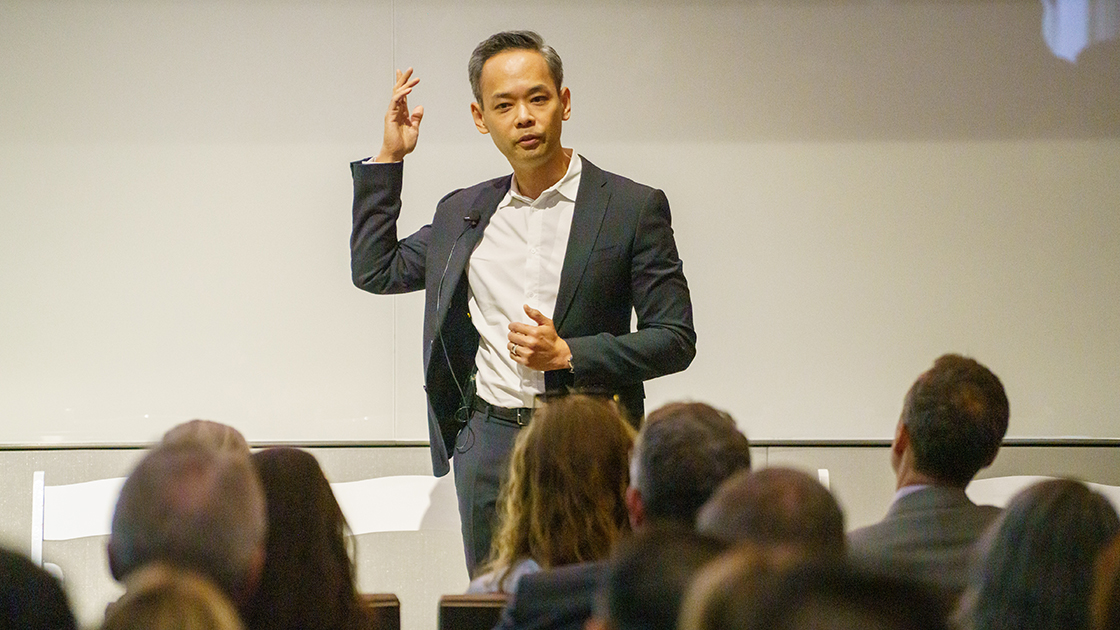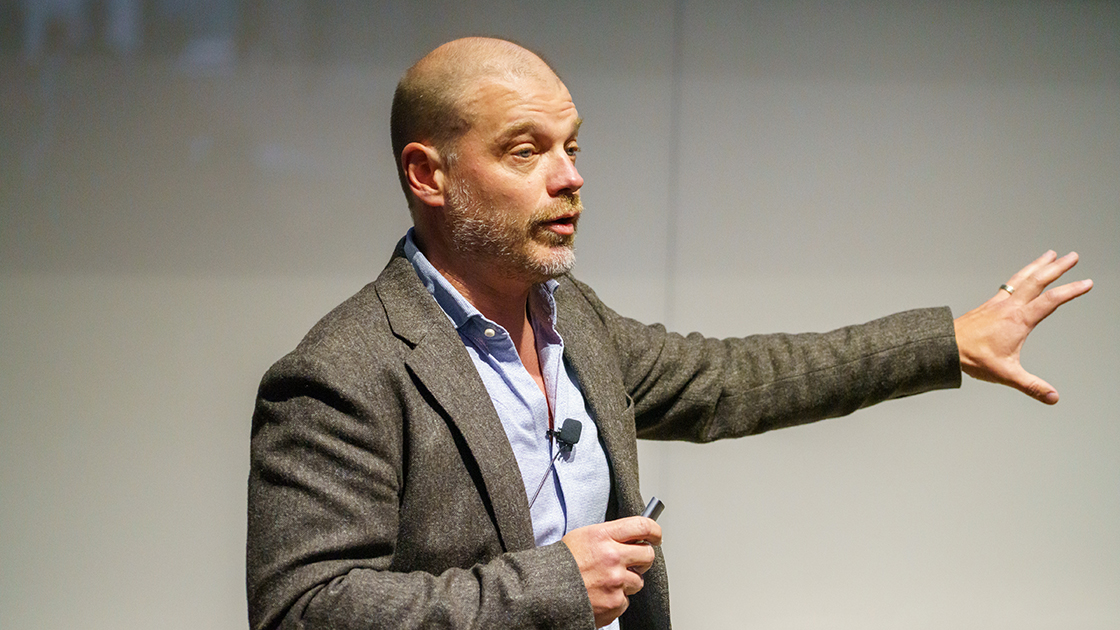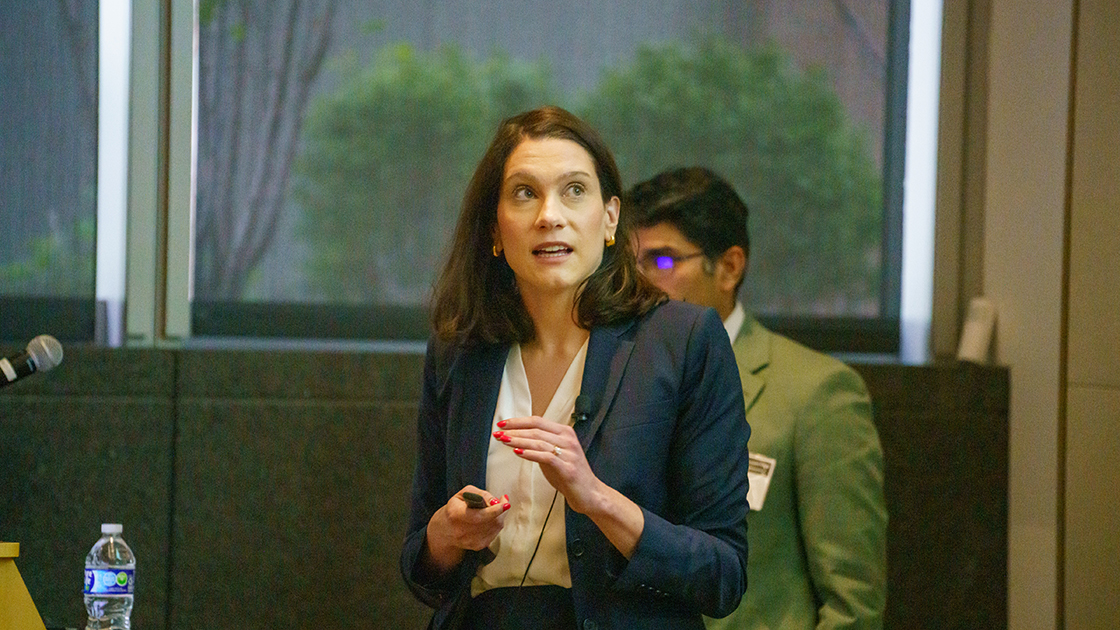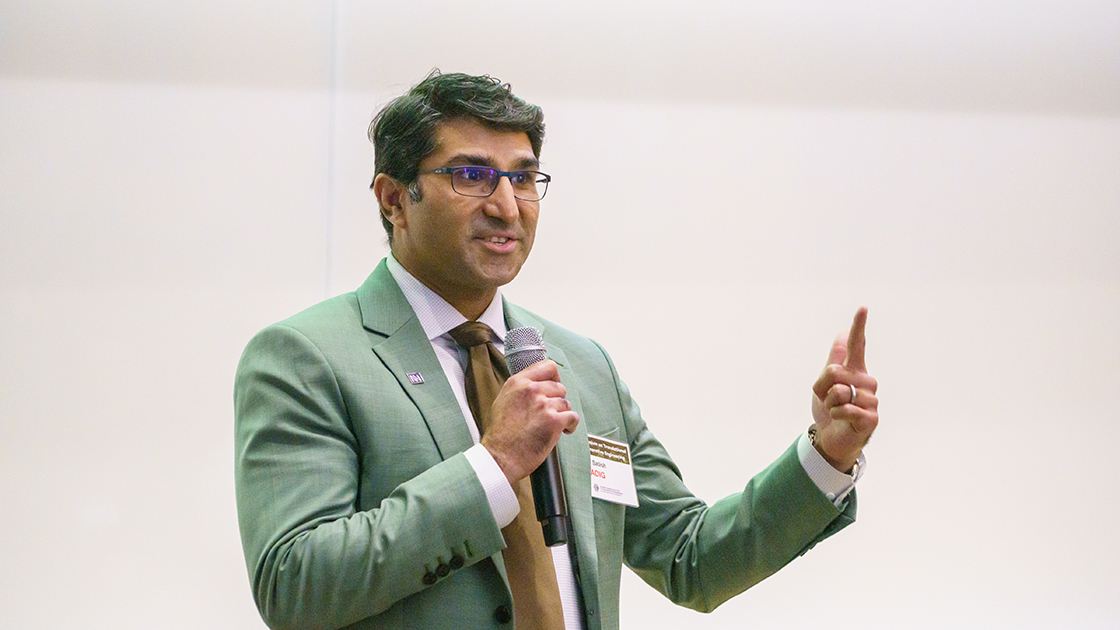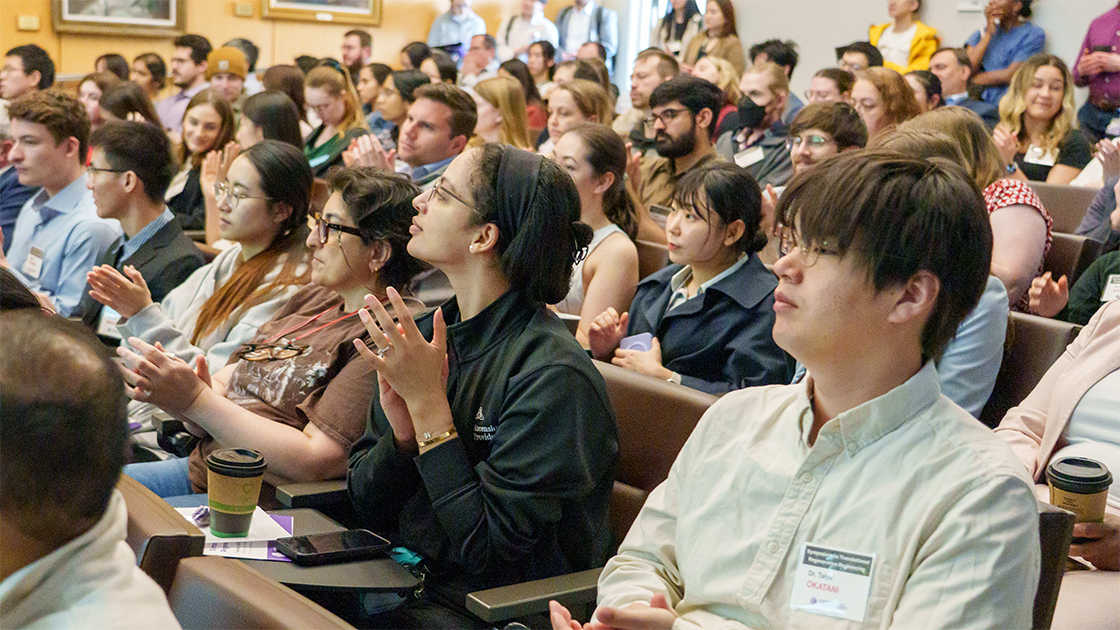Symposium Marks Launch of New Regenerative Engineering Institute
The event gathered leaders to showcase the field’s breakthroughs and future
At his introductory address during the Symposium on Translational Regenerative Engineering, Northwestern Engineering’s Guillermo Ameer made it clear what inspires his work.
As Ameer spoke, letters from three people with medical questions were projected onto a screen above him. One letter was from a person seeking help for an open wound that had lingered for five months. Another was from a young father appealing for treatment for a troublesome shoulder so he could play pain-free with his kids. The last was from a parent hoping Ameer could eventually regenerate a lost hand for their three-year-old child.
“I get these [letters] all the time,” said Ameer, who is the Daniel Hale Williams Professor of Biomedical Engineering and professor of surgery at Northwestern. “I do publish [academic papers], I do work, I write grants and do other academic stuff. But at some point, you have to ask yourself, who am I helping? Is anybody’s life being changed by what we’re doing here?”
Ameer and Northwestern want to make sure the answer is “yes.”
The symposium, held April 29 at the Simpson Querrey Biomedical Research Center on Northwestern’s Chicago campus, was the launch event for the new Querrey Simpson Institute for Regenerative Engineering at Northwestern University (QSI RENU). Ameer serves as QSI RENU’s inaugural director.
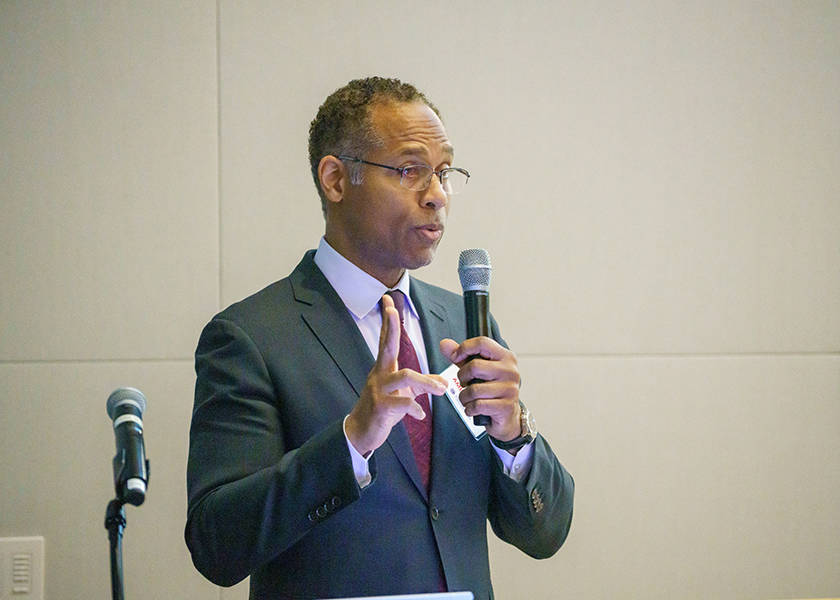
Building upon cross-disciplinary science
Leveraging Northwestern’s legacy of interdisciplinary scientific collaboration, QSI RENU will address some of the most complex challenges in regenerative medicine. As a key part of the University’s broader commitment to advancing the biosciences, the institute will work to accelerate recovery from injuries and surgeries, develop bioengineered tissues and organs, and reduce reliance on donor transplants.
“I am just so amazed by the innovative work to accelerate the pace of biomedical discovery and to give patients new hope for treatments that will alter their lives,” said Kathleen Hagerty, Northwestern University provost and First Chicago Professorship in Finance at Northwestern’s Kellogg School of Management. “This is something that the University is so proud of and is such an important part of the mission.”
QSI RENU represents another example of the growing partnership between the McCormick School of Engineering and the University’s medical community.
“I’m delighted to see this initiative because it’s not only about engineering, but it is, by definition, collaborative,” said Christopher Schuh, dean of Northwestern Engineering. “It’s cross-unit. It involves the Feinberg School of Medicine. It involves the hospital. It involves translation.”
Feinberg School of Medicine dean Eric Neilson echoed that sentiment.
“I think there’s a strong future in this relationship [between engineering and medicine],” he said.
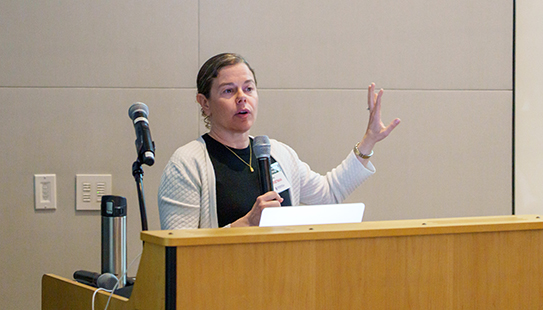
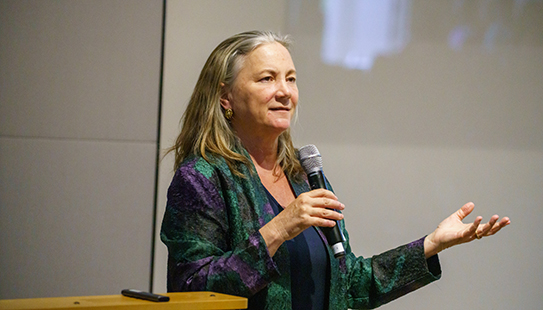
Northwestern University Trustee Kimberly K. Querrey (’22, ’23 P) made a $10 million gift to create and enhance QSI RENU, bringing her total giving to the institute to $35 million. After being presented by Ameer with a 3D-printed version of the center’s logo at the end of the symposium, Querrey said she wants to inspire collaboration and positive work.
“On behalf of the pursuit of scientific discovery and the ongoing effort to improve the human condition, I want to sincerely thank you for your dedication and hard work,” she said. “With initiatives like this Institute, I’m hopeful that we’ll be able to push the boundaries of what’s possible—and achieve truly transformative outcomes together.”
Ameer, a leader in the field of regenerative medicine who has helmed the Center for Advanced Regenerative Engineering since its 2018 founding, has a roadmap for how QSI RENU can fulfill Querrey’s vision.
“What we need to do is have a central place where people can come and trust the type of research that’s being done and can trust the technologies that come out of that research,” Ameer said. “That’s what QSI RENU hopes to do.”
Eric Perreault, the University’s vice president for research, a professor of biomedical engineering at Northwestern Engineering, and a professor of physical medicine and rehabilitation at Feinberg — recalled previous breakthroughs from Ameer and others in this discipline and stressed its value.
“Stories like this and other breakthroughs that RENU is pursuing matter—especially now. At a time when federal support for research is under pressure, it’s more important than ever to demonstrate how university research benefits society,” Perreault said. “This isn’t abstract work—it’s deeply human. And it’s made possible by the bold, collaborative, forward-thinking research culture we’ve built at Northwestern.”
Renowned speakers showcase field’s impact
The symposium featured presentations from six notable leaders in the field who highlighted the impact regenerative medicine has already made and what it could do in the future.
Keynote speaker Karen Christman (’00), the Pierre Galletti Endowed Chair for Bioengineering Innovation and associate dean for faculty affairs and welfare at the University of California San Diego’s Jacobs School of Engineering, detailed her group’s research into injectable extracellular matrix (ECM) derived biomaterials that form scaffolds once injected in vivo. These ECM biomaterials show promise for regenerative engineering in several applications, including cardiovascular disease and women’s health.
What we need to do is have a central place where people can come and trust the type of research that’s being done and can trust the technologies that come out of that research. That’s what QSI RENU hopes to do.
“I’m really proud to see [Northwestern] pushing ahead, trying to translate regenerative engineering therapies and applications,” said Christman, who graduated from Northwestern Engineering with a bachelor of science in biomedical engineering. “That’s really a passion of mine and what drives me — not publishing in Nature, which of course is nice, but what really drives me is translating to patients.”
Fellow keynote speaker Laura Niklason — founder, president, and CEO of Humacyte — is working to do the same. Niklason’s company recently received FDA approval for an acellular tissue engineered artery to hit the open market. She relayed how the idea went from the benchtop to clinical trials and into people’s bodies, leading to positive outcomes.
“Any amount of innovation is hard,” said Niklason, who is an adjunct professor of anesthesiology and biomedical engineering at Yale University. “To succeed, you’ve got to be optimistic.”
Nathan Gianneschi, the Jacob and Rosaline Cohn Professor of Chemistry, Materials Science and Engineering, and Biomedical Engineering at Northwestern, and Kurt Lu, Eugene and Gloria Bauer Professor of Dermatology at Feinberg, shared their research during their lecture “Biomimetic Melanin for Repairing the Skin.” They developed a synthetic, biomimetic melanin that mimics the natural melanin in human skin and can be applied topically to injured skin to accelerate wound healing. These effects occur both in the skin itself and systemically in the body.
Jacqueline Burke (’22 PhD), research assistant professor of biomedical engineering at Northwestern Engineering, and Satish Nadig, the Edward G. Elcock Professor of Surgery at Feinberg, delivered the talk “Transplantation Without Immunosuppression.” Combining biomedical engineering and transplant surgery, Burke and Nadig are developing a nanoparticle-based therapy designed to recondition organs before transplantation, mitigating the inflammatory damage that can lead to failure.
Burke, who worked in Ameer’s lab as a PhD student, embodies QSI RENU’s goals: training, translation and interdisciplinary collaboration. Diagnosed with Type 1 diabetes when she was 9 years old, Burke developed a technique while a Northwestern student that improves the effectiveness of islet transplantation to treat Type 1 diabetes itself, not just the disease’s symptoms. Burke is the chief scientific officer of SNC Therapeutics, a Northwestern startup that focuses on therapeutic delivery.
She’s now collaborating with Nadig, an organ transplant surgeon whose expertise and experience complements hers. That combination allows the team to be more efficient with its work and ultimate goal of helping patients.
“Having [Nadig’s] insights when we’re planning experiments sets us up very well, when we go to the clinic, to be more translational,” Burke said. “We already have things figured out and it’s not going to be something that holds the therapy back. It’s very impactful.”
